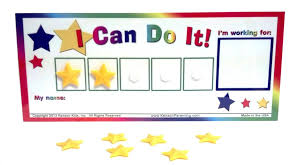While we are stuck inside, you are probably filling the role of your child’s teacher and possibly ABA therapist. Here are some tips for teaching receptive and expressive identification of objects.
What is expressive and receptive language? Expressive language is speaking and receptive language is understanding others speaking. So for example, if you hold a ball in front of your child and ask “What is this” and he says “Ball”; that is expressive language. If you say “Go find me a ball to play with” and he goes and picks up a ball; that is receptive language.
Let’s start with receptive language. You want to make sure your child understands what you are asking him to do prior to teaching the language piece. So I would put out an item or two he knows and ask him to “Find,” “Get,” etc. the item. If he does as asked then great! Give him some praise or a hug, whatever he enjoys. If not, provide a physical prompt (i.e., use your hand to guide his hand) to obtain the object. Then try this again until you are confident he understands what you are asking of him: to get or show you the item. Now get an item you want to teach him and 2 other items. Put all 3 items in front of him and ask him the same question, “Find/Get ” Follow the same teaching procedure using physical prompts. Alternatively, if you find your child does not like physical prompts, you can try gesturing or pointing toward the item you are asking for. After prompting the correct answer, try asking the same question again so he can practice responding independently.
For a child who can imitate language, you can also teach him to label items expressively. Hold up the item and ask “What is this” or “Can you tell me what this is?” If he answers correctly then… Yay, throw a party! If he does not respond or responds incorrectly, model the answer by saying “Say ball.” He should then respond “Ball.” Then ask the question again to give him the opportunity to answer independently. Or if your child uses an augmentative and alternative communication device, such as Proloquo2Go or Touch Chat, and knows how to read, you can teach him to select or spell the name of the item using his device.
It is very important before asking your child a question or giving a direction, to wait for him to look at you. It also helps to have him seated and still to ensure he is attending to you and the materials. If you are actively getting ABA services in your home, check with your BCBA about more specifics and troubleshooting any concerns. This may include prompt dependency, attending issues, and consistent errors. If you aren’t receiving ABA services and are interested in telehealth or in-person services, contact us here.













